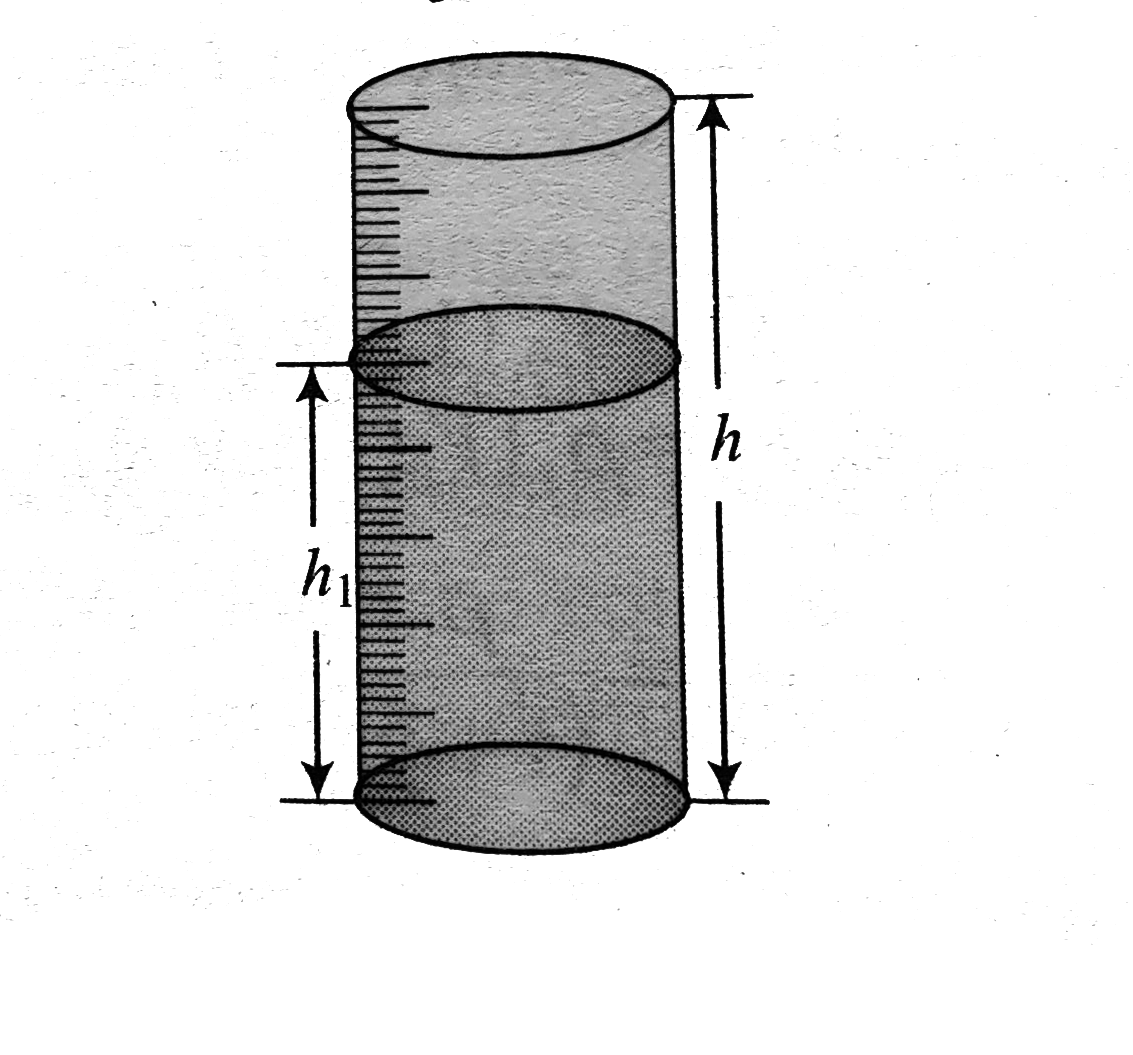Consider a cylindrical container of cross-section area A length h and having coefficient of linear expansion αc. The container is filled by liquid of real expansion coefficient γL up to height h1. When temperature of the system is increased by Δθ then
(a). Find out the height, area and volume of cylindrical container and new volume of liquid.
(b). Find the height of liquid level when expansion of container is neglected.
(c). Find the relation between γL and αc for which volume of container above the liquid level
(i) increases
(ii). decreases
(iii). remains constant.
(d). On the surface of a cylindrical container a scale is attached for the measurement of level of liquid of liquid filled inside it. If we increase the temperature of the temperature of the system by Δθ, then
(i). Find height of liquid level as shown by the scale on the vessel. Neglect expansion of liquid.
(ii). Find the height of liquid level as shown by the scale on the vessel. Neglect expansion of container.

The correct Answer is:(a) hf=h{1+αcΔθ}
Af=A{1+2αcΔθ}
Vf=Ah{1+3αcΔθ}
volume of liquid Vw=Ah1(1+γLΔθ)
(b) hf=h1{1+γLΔθ}
(c ) (i) 3hαa>h1γl
(ii) 3hαc<h1γl
(iii) 3hαc=h1γl
(d) ΔV=Ah(γL−3αc)Δθ
(i) hf=h1(1−3αcΔθ)
(ii) hf=h1(1+γLΔθ)
(iii) (1)γL>2αc
(2) γL<2αc
(3) γL=2αc
(a) hf=h{1+αcΔθ}
Af=A{1+2αcΔθ}
vf=Ah{1+3αcΔθ}
volume of liquid Vw=Ah1(1+γLΔθ)
(b) hf=h1{1+γLΔθ}
(c ) (i) 3hαc>h1γl (ii) 3hαc<h1γl (iii) 3hαc=h1γl
(d) ΔV=Ah(γL−3αc)Δθ
(e) (i) hf=h1(1−3αcΔθ) (ii) hf=h1(1+γLΔθ)
(iii) (1)γL>2αc(2)γL<2αc(3)γL=2αc
Topper's Solved these Questions
Similar Questions
Ratio among linear expansion coefficient (c), area expansion coefficient (B) and volume expansion coefficient (Y) is
View SolutionA solid cube is first floating in a liquid. The coefficient of linear expansion of cube is α and the coefficient of volume expansion of liquid is γ. On increasing the temperature of (liquid + cube) system, the cube will sink if

View Solution
Knowledge Check
Coefficient of linear expansion α an coefficient of volume expansioγ of solid are related as
Aγ=3αBα=3γCγ=2αDα=γA long cylindrical metal vessel of volume V and coefficient of linear expansion α contains a liquid. The level of liquid has not changed on heating. The coefficient of real expansion of the liquid is.
AV−αVBV+αVCVV−αD3αOn heating a liquid having coefficient of volume expension α in a container having coefficient of linear expansion α/2, the level of the liquid in the container would
AriseBfallCremains almost stationaryDCannot be bredicted
A cube of coefficient of linear expansion alpah is floating in a bath containing a liquid of coefficeient of volume expansion γl. When the temperature is raised by ΔT, the depth upto which the cube is submerged in the liquid remains the same. Find relation between α and γl
View SolutionA cubical block of co-efficient of linear expansion αs is submerged partially inside a liquid of co-efficient of volume expansion γl. On increasing the temperature of the system by ΔT, the height of the cube inside the liquid remains unchanged. Find the relation between αsandγl.
View SolutionOn heating a liquid of coefficient of cubical expansion γ in a container having coefficient of linear expansion γ/3. The level of liquid in the container will
View SolutionA liquid with coefficient of volume expansion γ is filled in a container of a material having coefficient of linear expansion α . If the liquid overflows on heating, then
View SolutionA solid with coefficient of linear expansion aplha just floats in a liquid whose coefficient of volume expansion is γ . If the system is heated, the solid will
View Solution
